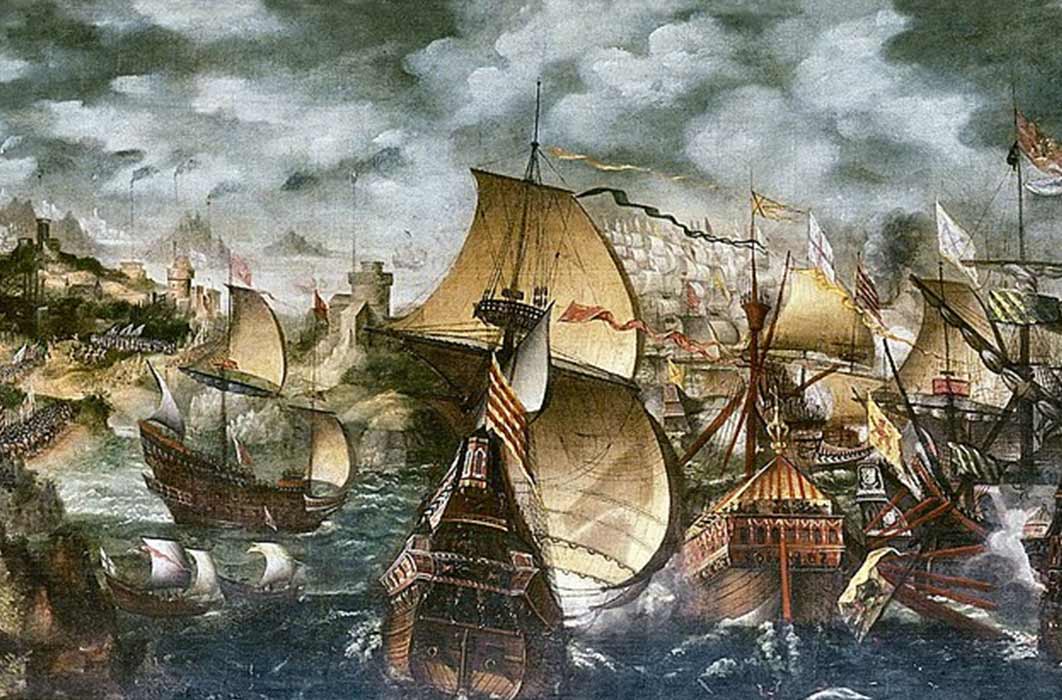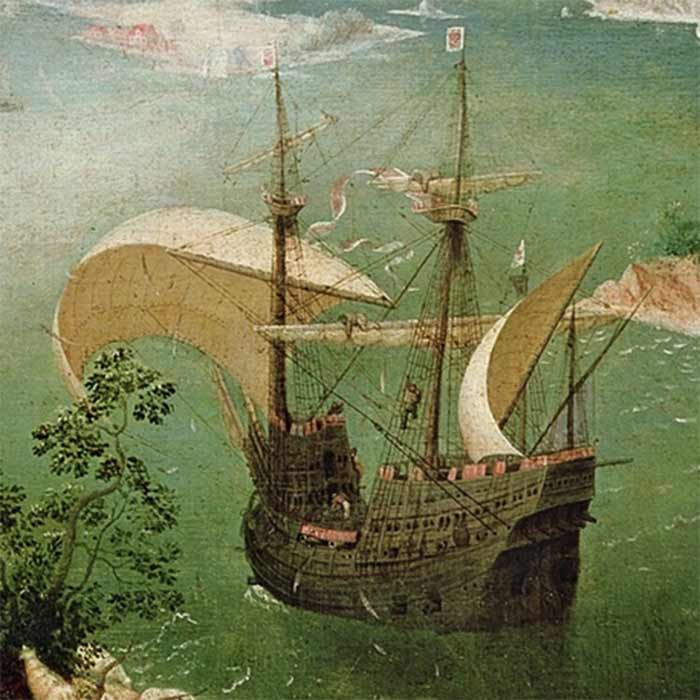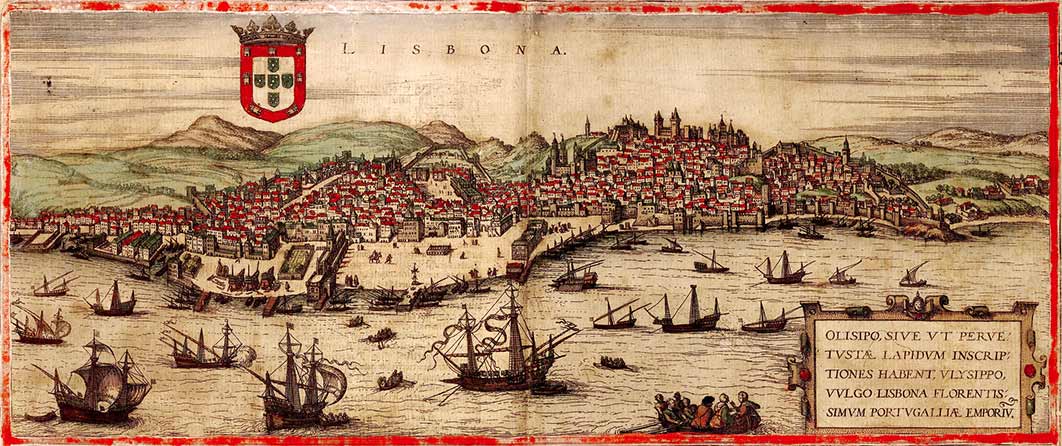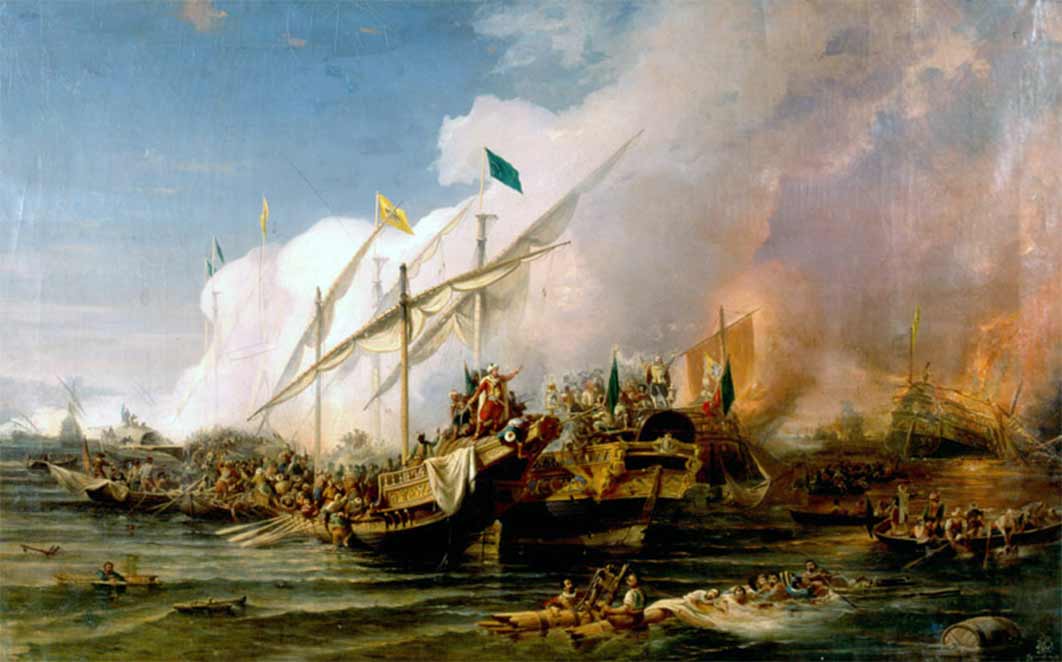
Galleons, Stallions Of The Seas
The 17th-century was of fundamental importance for everything related to naval design in the centuries to follow. In the 1600s a vessel called a galleon, took center stage in international maritime traffic; however, this type of ship already existed since the 15th century, especially in the Mediterranean Sea. Together with the Dutch Fluit, the galleon, is considered the progenitor of the modern merchant ship, since it was large, spacious and able to withstand tempestuous oceanic conditions, however it needed to sail downwind (from the stern sectors) for optimal use of the vessel.

A large carrack, attributed to Pieter Bruegel the Elder (1558) (Public Domain)
Origins Of The Galleon
The origin of the name ‘Galleon’ stems from the Venetian word Gallione and this type of ship was already widespread in most of Europe (with variations from country to country) until about 1650. This great ship provided a bridge to past construction techniques, precisely because of the "beak" in the front, in the bow section, under the bowsprit. This beak is a kind of rostrum, which the Dutch used to call "Galjoen".
The galleon originates from a hull born from various hybrids both in the north and south of Europe, from the 14th century, called "Carracks". Standard specific requirements were consolidated on these ships, such as the three masts, of which the foremast and the mainmast were fitted out with square sails and the mizzenmast with lateen sails. Other ‘specs’ were a round hull, a prominent forecastle, a high quarterdeck, and an amidships saddle. Various navies made modifications to these specifications, depending on their needs and requirements. By the 1500s the carrack, was already widespread throughout the Mediterranean, as bibliographic references in Spain, France, Republic of Genoa and Venice (Serenissima) confirm.

Lisbon and the Tagus (1572). Galleon in the center (one type of Portuguese galleon), carracks, galley, round caravels, and caravels (lateen), among other vessels (Public Domain)
Enter The Galleons
In Spain, at the Court of Charles I, the cosmographer Diego Ribero, in his famous work Carta Universal of 1529, reproduced ships that could already be defined as galleons on the basis of their sail equipment, although they were smaller in size and similar to the caravels.
But when was the first galleon designed? It seems that the first model can be attributed to the Venetian Matteo Bresson in 1528, in anticipation of the advance of the Turks, as demonstrated by the Battle of Prevesa in 1538, where these large ships were deployed. The hulls of these galleons were still built mainly with the clinker technique - a method of boat building where the edges of hull planks overlap each other - on a skeletal framework. This technique was already experimented in the Mediterranean starting from a keel length designed to fit the final purpose of the vessel. The construction continued with standard techniques to facilitate the work of carpenters.





